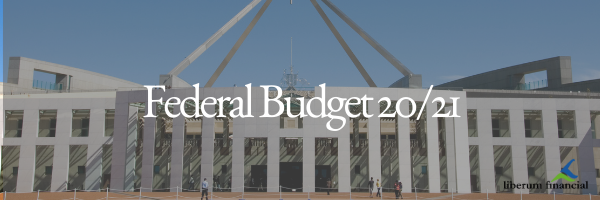Federal Budget Update – 2020/2021
Spend, spend, spend as the focus remains on recovery and jobs, jobs, jobs
Treasurer Josh Frydenberg handed down Australia’s federal budget on Tuesday 6 October.
While last year, it was all about delivering the long-awaited budget surplus, this year it’s all about spurring recovery.
AMP Capital’s Head of Investment Strategy and Chief Economist, Shane Oliver, has provided a good summary which is available here for those who would like to dive into the detail, however the key points from the announcement are as follows:
- The Government now expects the Federal budget deficit to peak at a record $213.7bn this financial year. That’s around 11% of GDP, its highest since the end of WW2. The risk is the deficit will be worse at around $230bn.
- Key measures include earlier tax cuts, massive tax breaks for investment & a new wage subsidy scheme.
- Providing more stimulus & holding off on budget repair are the right thing to do. But it will be a long hard slog to get the deficit back down and stabilise public debt.
What does this mean for you? There are implications for Australian assets:
- Cash and term deposits – with the cash rate likely fall to 0.1%, cash & bank deposit returns will remain low for a long time.
- Bonds – the surge in public debt would all other things being equal, point to higher bond yields, but this is offset by massive spare capacity, low private sector borrowing and low inflation, so it’s hard to see a lot of upside in bonds yields. If coronavirus comes under control, it’s hard to see much downside either, so medium-term bond returns are likely to be low.
- Shares – the ongoing addition of stimulus will further aid the recovery, at the same time that interest rates are very low, all of which is supportive of shares.
- Property – high unemployment, the phasing down of income support and the hit to immigration still point to more downside in prices in Melbourne and Sydney, but continuing government property support measures will offset – particularly in houses, outer suburbs and cities less impacted by immigration.
- The $A – ongoing fiscal stimulus at the high end of comparable countries coming at a time of rising commodity prices and a declining US dollar point to more upside for the $A.
If you’d like to discuss the impact of the budget, or the current climate more broadly, on your portfolio please don’t hesitate to reach out to us.


Comments are closed.